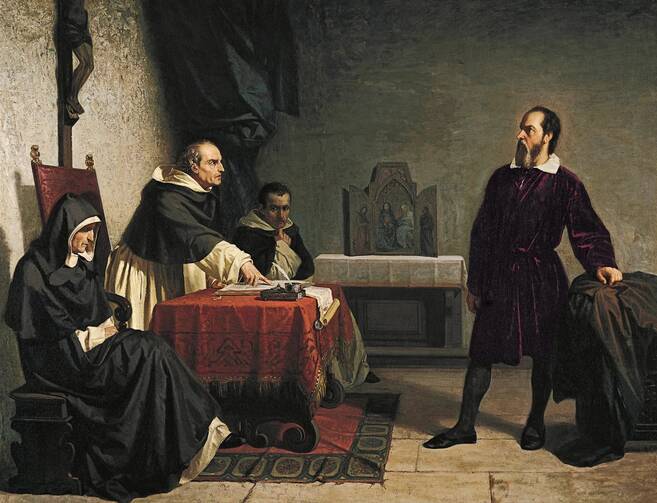In the abortion debate, it’s the pro-lifers who have science on their side
(RNS)—We Americans all know that the relationship between faith and science is on the rocks. We’re taught in school that the split began some four centuries ago, with the Galileo affair.
You remember: For decades, beginning in 1610, the data-driven scientist Galileo Galilei bravely stood up to a superstitious Catholic Church, which insisted the universe revolved around the Earth. In the end, the scientist was forced to recant. Today, we know better: Religious institutions need to stay in their lane and let science do science things without oversight or interference.
The problem is, the thumbnail history of Galileo’s case is almost totally wrong. And the approach it has engendered is deeply flawed, especially when we rightly view science as the study of God’s creation.
As a moral theology professor and bioethicist at a medical school, I know just how ingrained this point of view can be—even among folks who are deeply religious. Such people work overtime to keep their faith over in one corner of their life and their pursuit of science in quite a different corner.
The problem is, this thumbnail history of Galileo’s case is almost totally wrong. And the approach it has engendered is deeply flawed, especially when we rightly view science as the study of God’s creation.
Though Galileo was put under house arrest and the church did use its temporal power to subject a scientist to legal accountability, he was never tortured for his views, as is sometimes alleged. Indeed, Galileo was actually quite popular with many of the church leaders of his day, and they were enthralled by his new theories. Even those who disagreed with him on the scientific merits gave Galileo room to advance his theories as the basis for a serious, predictive hypothesis.
It is those defending pro-choice orthodoxy who regularly distort science about prenatal development to comfort themselves and pregnant women about the moral implications of abortion.
But because he had not yet proved his case, church leaders resisted Galileo’s demands that they change their interpretation of the Bible, under pressure as they were from the relatively new phenomenon of Protestantism, which pushed Christians to take the literal sense of Scripture more seriously. Those Scriptures appeared to claim that the sun moved around a stationary Earth.
But Rome’s clerics were open to what the science proved.
Cardinal Robert Bellarmine, one of Galileo’s most important conversation partners over the 17-year-long controversy, was so committed to the scientific evidence that he claimed in an April 1615 letter that if Galileo proved his case scientifically the church would be forced to change its interpretation of Scripture on the motion of heavenly bodies:
I say that if there were a true demonstration that the sun is at the center of the world and the earth in the third heaven, and that the sun does not circle the earth but the earth circles the sun, then one would have to proceed with great care in explaining the Scriptures that appear contrary; and say rather that we do not understand them than that what is demonstrated is false. But I will not believe that there is such a demonstration, until it is shown me.
In our present moment, the battle for justice for prenatal children in the U.S. is being fought along similar lines. Religious activists—who have historically campaigned for fundamental human rights—are accused of putting theology over science.
Facts, as they say, are stubborn things. In defending abortion, some pro-choice activists can only ask women to ignore what their eyes evidently see.
It’s true that we are motivated by our theological commitments to the dignity of the human person, made equal in the image and likeness of God. But our religious motivations work alongside our deep commitment to science and to following the facts wherever they lead, no less than Cardinal Bellarmine.
In fact, it is those defending pro-choice orthodoxy who regularly distort science about prenatal development to comfort themselves and pregnant women about the moral implications of abortion.
Defenders of abortion rights, for instance, dismiss the fetal heartbeat as mere “fetal pole cardiac activity,” arguing that it should not be used in legislation limiting abortion as a marker of human life. Embryology textbooks, however, show that a four-chambered heart is present in the fetus from at least six weeks’ gestation, pumping blood unidirectionally.
Gatekeepers such as the American College of Obstetricians and Gynecologists have long downplayed the existence of pain in prenatal children, seemingly clearing the consciences of anyone contemplating abortion. But scientists following the evidence have changed their minds and now believe that children as young as 12 weeks’ gestation can feel at least some form of pain.


No comments:
Post a Comment